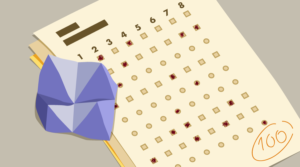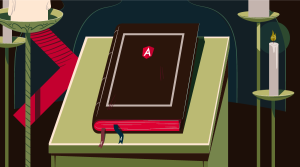
Learn how to make a quiz in JavaScript with our easy-to-follow code tutorial. Perfect template for engaging your audience with interactive content.

Learn how to make a quiz in JavaScript with our easy-to-follow code tutorial. Perfect template for engaging your audience with interactive content.

Learn how to use jQuery's getJSON helper to load JSON-encoded data from a server using a GET HTTP request.

Need to test your React components? Check out Jest, a testing framework by Facebook with some great features that make testing React components a breeze.

You don't need to be working on a fancy, large-scale project to use Webpack. James Hibbard demonstrates how you can use it to bundle a simple static site.

Learn how the JavaScript function setTimeout() works, how it can be used with other libraries like jQuery, and see examples.

Take advantage of QR codes without the need for a native app. Dmitri and Paul demonstrate how to build a QR code reader using just HTML, CSS and JavaScript.

Yaphi Berhanu creates a JavaScript clock widget to demonstrate how coding your own components leads to more efficient code.

This step-by-step guide will show you how to install npm, and master common commands in the Node Package Manager (npm) command-line interface.

Lukas White takes an in-depth look at DropzoneJS — an extremely configurable JavaScript library that takes that makes dealing with file uploads fun again.

Lukas White and James Hibbard show how to create a simple command-line app that interacts with the GitHub API to initialize Git repositories.

This guide shows how to use the mysql module to connect to your database and perform basic CRUD operations.

This article, sponsored by New Relic, provides an introduction to the automated task runner, Gulp.js, and shows how it can shrink page size.

Michael introduces SimpleWebRTC, showing how to painlessly implement WebRTC in web applications by creating a cross-browser text and video messaging app.

Matt Burnett conducts a whistle-stop tour of ten essential Sublime Text plugins that will make you a happier and more productive JavaScript developer.

Feras Khoursheed introduces you to FuseBox, a lightweight module bundler that serves as a faster, simpler and ultimately more flexible webpack alternative.

Samier Saeed walks you through the best way to implement a singleton in JavaScript and examines how that has evolved with the rise of ES6.

Dan Prince demonstrates ten ways you can use native ES6 features (such as arrow functions & collection methods) to replace Lodash in your projects.

Jeff Mott takes an in-depth look at ES6 classes starting with the basics, then moving on to discuss inheritance, encapsulation, polymorphism and much more.

Craig describes how to use proxies in ES6 to perform meta-programming operations such as intercepting object property inspections and function calls.

Symbols, a new primitive type, are one of the lesser-known features of ES6. Nonetheless, they can come in quite handy, as Nilson Jacques demonstrates.

Manjunath compares AngularJS and Angular 2+, covering differences and new features including AtScript, improved dependency injection and a brand new router.

Create new Angular 2 applications, scaffold components, run tests, and build for production with Jurgen Van de Moere's guide to Angular CLI

Jurgen Van de Moere takes an existing Angular 2+ app and refactors it into a more modular component architecture, making use of reusable "dumb" components.

George Martsoukos digs into the art of animating Bootstrap carousels with stylish-looking animations using GSAP — the GreenSock Animation Platform.
Jani Hartikainen gets you started with unit testing your JavaScript — an important, but often overlooked part of development — using Mocha and Chai.

Are you an Angular dev looking to get started with React? If so, then join Mark Brown for a guided tour of the differences and similarities between the two.

jQuery Form Wizard is a jQuery plugin for creating form wizard or form flow without refreshing your page or webpage. We have listed 6 of them in this post.

Calibre is a fully-automated tool suite for auditing & improving performance. Here's how to use it to detect the impact of running JavaScript on your site.

Read Grab Our Free Printable Functional JavaScript Cheat Sheet and learn JavaScript with SitePoint. Our web development and design tutorials, courses, and books will teach you HTML, CSS, JavaScript, PHP, Python, and more.

Brain Greig shows you how to get up and running with Headless Chrome and demonstrates how to capture screenshots of pages as you use it to navigate a site.